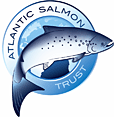Workshop sessions
Topic 4. Classification/ typology/ hydromorphological indicators.
- What physical features should be characterised at different spatial scales?
- Procedures for identification and measurement of physical indicators across spatial scales.
David Sear, Southampton University.
Capturing and characterizing hydromorphology for river management.
Never before have geomorphologists been in such a position of having to practice what they preach! Demand for geomorphological input to river management has increased steeply in the last two decades to the point where fundamental science questions are now asked for which we have less than satisfactory answers. Requirements to capture information on basic channel morphology are becoming more complex as we seek to map such data back on to other disciplinary concerns; for example habitat and ecosystem processes. At the same time, how we interpret, process and visualize hydromorphological data is changing. Increasing numbers and different methodologies for classifying data into river types are emerging. Now is a good time to reflect on the 'why' and 'how' of hydromorphological data capture and analysis, and to discuss some of the practical, technical and methodological challenges these raise. For example, how does one capture ecologically meaningful data at the catchment scales demanded by river basin planning, and how do the data demands change when the questions change scale? In the end, this talk will not necessarily advocate any specific approach; rather it serves the community by providing a stimulus for discussion.
Topic 5. Linking hydromorphology and ecology (more general issues and concepts, within context of reference conditions)
|
Updated: 23 Jan 2024, Content by: HM
|






